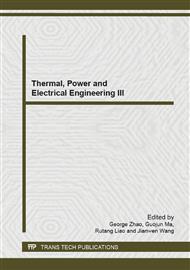p.358
p.366
p.370
p.375
p.382
p.389
p.394
p.399
p.405
The Utilization of Genetic Algorithm on High Temperature Superconducting Magnet Design
Abstract:
In high temperature superconducting (HTS) magnet design, it well known that the critical current (Ic) is sensitive to the direction of the local magnetic field. The perpendicular magnetic field component to the face of tape have a larger effect on the Ic of a HTS tape than the parallel component. Thus in HTS magnet design, the magnetic field distribution is the first considering factor. This work presents a HTS magnet design using genetic algorithm to obtain the object. When the length of the tape is certain, the results show that the process gives the optimal number of the double pancake and the inner radius of the magnet.
Info:
Periodical:
Pages:
382-385
Citation:
Online since:
June 2014
Authors:
Keywords:
Price:
Сopyright:
© 2014 Trans Tech Publications Ltd. All Rights Reserved
Share:
Citation:


